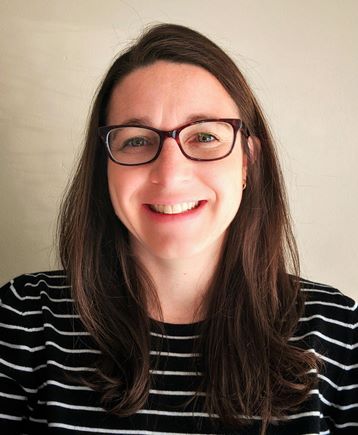BBDC Member Profile
Jacqueline Beaudry, PhD
June 7, 2021
By Krista Lamb
 Dr. Jacqueline Beaudry started her research life as an undergrad in the Department of Psychology at McMaster University. She volunteered on a project studying invasive species in the Hamilton harbour: Wearing hip waders, and tossing frozen corn into the water to attract aquatic life, she felt right at home. During her Master’s program, also at McMaster, she started to investigate brown adipose tissue and realized she wanted her career to be based on human applications, which evolved around exercise, obesity, and diabetes.
Dr. Jacqueline Beaudry started her research life as an undergrad in the Department of Psychology at McMaster University. She volunteered on a project studying invasive species in the Hamilton harbour: Wearing hip waders, and tossing frozen corn into the water to attract aquatic life, she felt right at home. During her Master’s program, also at McMaster, she started to investigate brown adipose tissue and realized she wanted her career to be based on human applications, which evolved around exercise, obesity, and diabetes.
In 2007, she began to study brown adipose tissue in mice that were acclimated to low oxygen using a hypobaric chamber as well as cold conditions that increased brown adipose tissue activity, simulating native mice that live-in high-altitude environments. Beaudry found the work fascinating. Soon after she defended her thesis in 2009, a wealth of new research about brown adipose tissue was released that highlighted the significance of the tissue and its existence in humans. For Beaudry, that was the human application she had been looking for.
“I was reinspired,” she says, as she started to study the mechanisms of stress hormones and high-fat feeding in a rodent model that rapidly induced a diabetic-and Cushing’s syndrome-like phenotype that resembled similar characteristics found in humans. Beaudry did a PhD in this area under Dr. Michael Riddell at York University in Toronto, where she studied pancreatic islets and worked with her lab mates on mechanisms of adipose tissue, liver and muscle.
“It was a nice transition in that I went from being able to recapitulate these characteristics from a human disease in a rodent model,” she says.
In 2013, Beaudry started her postdoctoral work in the lab of Dr. Daniel Drucker at the Lunenfeld Tanenbaum Research Institute at Mount Sinai Hospital in Toronto. There, she flourished in an atmosphere that was focused on type 2 diabetes research that had human applications. With a family history of the disease, she felt closely aligned with those who develop it, and this fueled her work in the lab to better understand the mechanisms of the condition.
With both of her supervisors, Beaudry learned the importance of mentorship in science and academia. “I think it’s impossible to get where you are on your own. It really is. I want to instill that in my lab and with my students. To say, we need to work together as a team, we need to be collaborative.”
Now running her own lab in the Department of Nutritional Sciences at the University of Toronto, Beaudry has honed her focus on obesity and studying adipose tissue function, which increases the risk of conditions like type 2 diabetes and insulin resistance.
“We’re interested in understanding the underlying mechanisms of what goes on in the adipose tissue. For example, how the adipose tissue expands and grows to adapt to changing environments,” Beaudry says. “Our end goal is to try to understand the adipose tissue more intricately so we can help people with diabetes and obesity. We want to try and figure out how we can create or improve obesity therapeutics. Because right now we’re seeing in research that therapeutics can get five maybe 10 percent body weight loss. But if we can manage body weight better, we could potentially help decrease obesity, type 2 diabetes and other conditions.”
In this work, like all of her research, Beaudry is keeping the words of one of her mentors in mind. “Something that Dr. Drucker always instilled in me is to ask, ‘Why are we doing this? Are we contributing to things?” She is hopeful that her research will indeed contribute to improving overall health for those with chronic illness.
